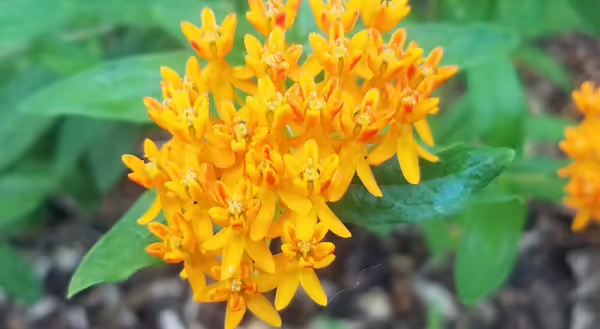
In recent years, milkweeds have gained attention from the public due to their exclusive relationship with the imperiled monarch butterfly.
I think many of us are familiar with common milkweed (Asclepius syriaca), which reminds me of childhood leaf picking experiments to see the characteristic sap of milkweeds. Before I knew the exact species name, I knew this plant was a milkweed and it had milky sap. However, there are more than 20 native milkweeds in Illinois, and I am always amazed that many people are unaware of the majority of this interesting and diverse plant family.
The common milkweed is a notoriously weedy species, growing in a wide range of open sun, disturbed habitats, from roadside ditches and abandoned fields to any sunny spots in woodland edges and along railroads. Having experienced this milkweed first in life, I viewed the milkweed family as weedy generalists that are adapted to a wide range of habitats, growing pretty much wherever their light, fluffy seeds land.
As I began to study other milkweeds closer over the years, I’ve learned that my discriminatory view of milkweeds was completely wrong. This family of plants inhabits a wide variety of the Illinois landscape, from wetlands and woodlands to open prairies and rocky glades. The diversity and adaptably within this plant family is really quite amazing, with many species having quite specific habitat requirements.
A total of 24 species from the milkweed family (Asclepiadaceae) can be found in Illinois. They are spread across four geniuses, including Ampelamus, Vincetoxicum, Matelea and Asclepius. However, the majority fall within Asclepius. There are actually five species of milkweed listed as endangered in Illinois and one federally threatened species among their ranks, illustrating the fact that not all milkweeds are tough, generalist species.
The federally threatened Mead’s milkweed (Asclepius meadii) is a sensitive species, unlike its adaptable cousin the common milkweed. Historical records actually indicate it was rare in the U.S. at the time of European settlement. Conversion of prairie to farmland led to further reductions in its population over the past two centuries, leading to its listing as threatened federally and, worse yet, endangered within Illinois.
Among Illinois native milkweeds, two are known to frequent wetland habitats, setting them apart from others, although both have other interesting and defining characteristics beyond their habitat requirements alone.
The first, thin-leaved milkweed or white swamp milkweed (Asclepius perennis) is unique since it’s the only milkweed that prefers shaded, wet sites. It has a short stature, often less than 2 feet tall, very dark green leaves and plainly white flowers. It is only present in southern Illinois, where it is still somewhat rare since it prefers high-quality wetlands that are in short supply statewide.
Another defining characteristic of thin-leaved milkweed lies in its seeds, which lack the tufts of hair that all other Illinois milkweeds adorn their seeds with to aid in wind dispersion. Interestingly, thin-leaved milkweed relies on floodwaters to disperse its seeds and, therefore, does not need the all-to-common tufts of hair.
Our second wetland-loving milkweed is the aptly named swamp milkweed (Asclepius incarnate), which is actually quite common across Illinois, occurring in nearly every county. It prefers full sun to part shade and moist to wet soil. However, it is quite adaptable, occasionally occurring in drier locations out in nature and taking on a narrow form with wider leaves, which can often be puzzling for field identification.
However, its adaptability has made it quite suitable as a landscape plant, and I think it is one of the most attractive milkweeds. Its tiny, yet showy pink flowers are quite fragrant, exuding a cinnamon scent. As of this writing, swamp milkweed is in full bloom in my garden, and I expect the flowering display to last about month, further adding to its ornamental beauty.
Butterfly milkweed (Asclepius tuberosa) is yet another ornamental extrovert among the milkweed family, which is often found in cultivation as a landscape plant. However, many gardeners I’ve discussed this plant with over the years did not realize it was actually a milkweed and for good reason; this plant has some confusing characteristics.
Unlike most other milkweeds, it has an alternate leaf arrangement (most are opposite) and lacks milky sap. To add to the confusion, it is commonly referred to as “butterfly weed” on plant tags and in common parlance. Its immaculate orange blooms are yet another point of confusion, as most milkweed flowers are white to pink. However, it has always been a favorite of mine due to its long-lasting orange blooms that come out in early summer and often a second time in late summer or early fall.
With the diversity and abundance among Illinois’ milkweeds, I encourage everyone to consider more of these interesting and ecologically valuable plants for their landscaping or simply enjoy and observe out in nature. There truly is a milkweed out there for everyone.
Ryan Pankau is a horticulture educator with the UI Extension, serving Champaign, Ford, Iroquois and Vermilion counties.
Originally published in the News-Gazette on August 3, 2019.